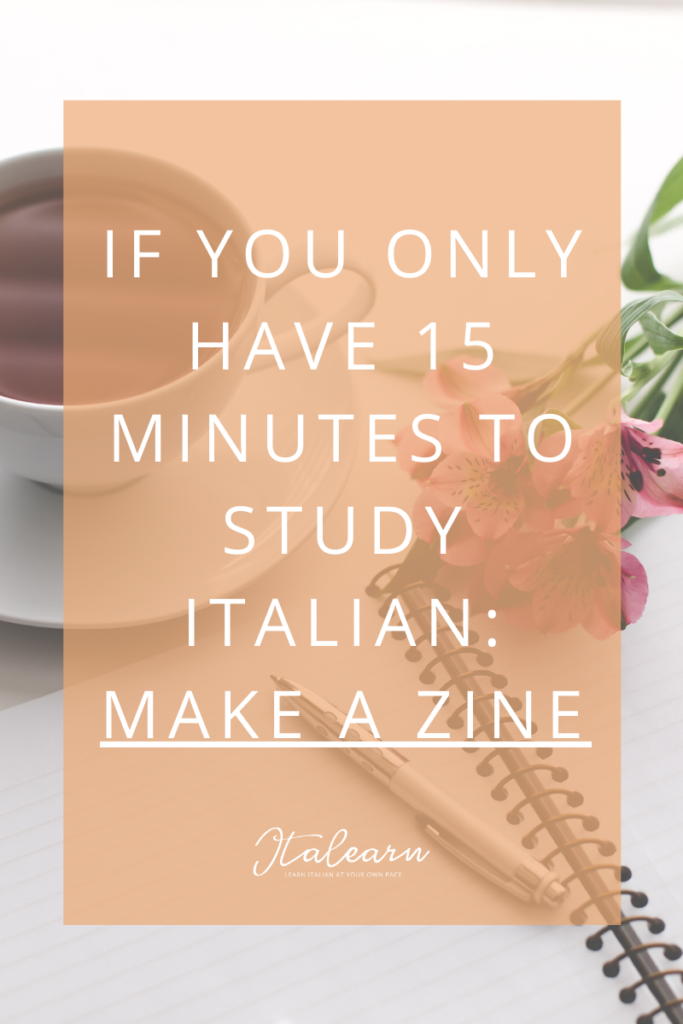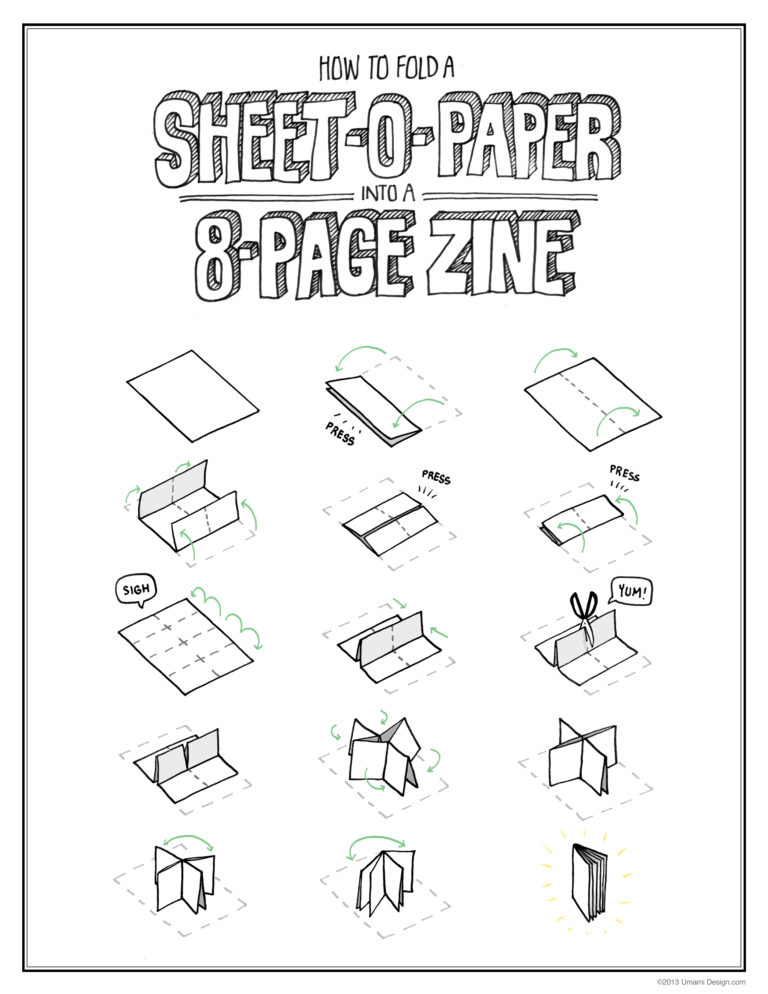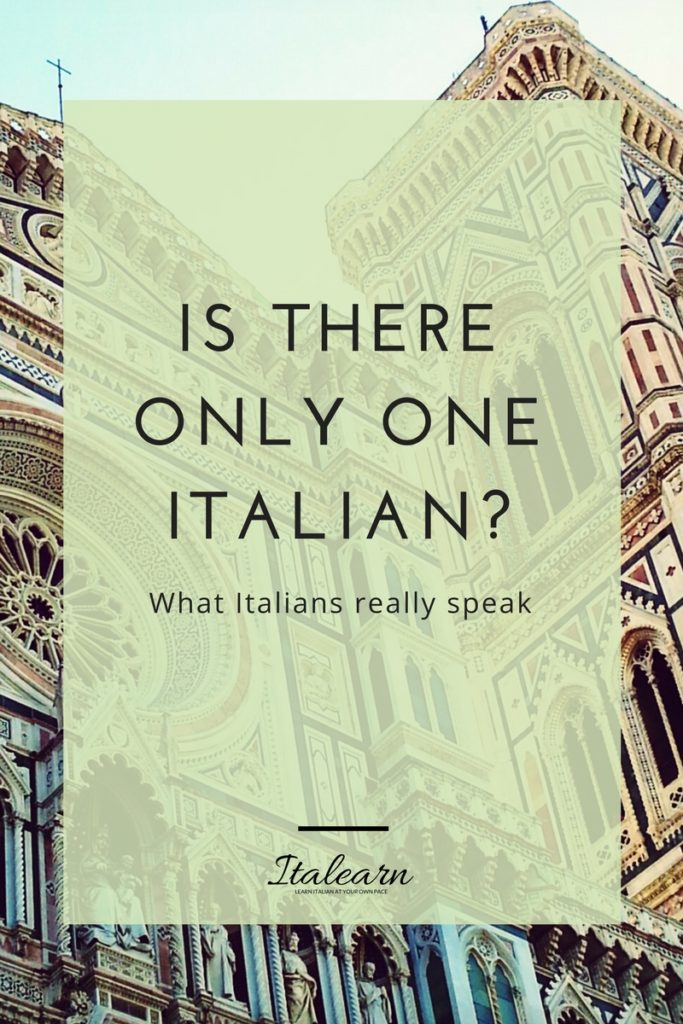The problem all language learners are faced with, sooner or later, is time. Actually, the lack of time. So what can you do if you only have 15 minutes to study Italian? Even as little as 15 minutes a week.
If you are wondering if 15 minutes a week are enough to really learn Italian, I would say no. But if every week you consistently show up for 15 minutes of uninterrupted, focused, intense work on the language, you can have good results both in the short and the long term.
In my career as a language learner I have enjoyed some tough all-grammar lessons and linguistics classes, because I love this side of language. But there is something else that has always attracted me: good stories.
You can write your own short story
Since I started out teaching Italian, I have always tried to balance my creative side with more standard types of lessons, until I realized this: there is always something to learn from a story. So my whole business is now gravitating around stories: how to read them, how to understand them, how to enjoy them, and ultimately how to write your own.
Don’t worry, you don’t have to write thousands of words every day, a few sentences will work wonders. Starting small is always a good idea. When you start small you have time to care about what you are doing and you don’t worry too much about the outcome.
So what’s a small thing you can do with only 15 minutes? You can write a zine!
Brief history of zines
Zines are independent publications, initially made by sci-fi fans in the 1930s and 1940s — hence the name: fanzine, zine. They gradually became the voice of punk movements and later the main outlet of riot girrls feminist message. We are talking pre-internet era, so this independent, underground publications were a way to be connected as a community and to spread awareness on important issues.
Zines are now easily available everywhere, but mostly are still semi-handmade. That’s their beauty, together with their message, of course.
How to choose what to write about
I’ll get into the technical part in a second, but I would like to focus on the content. The “regular” zine is made out of a folded A4 paper so that you have a front cover, a back cover, 6 internal pages and even the whole back if you want to draw/write a longer story there.
So basically you need a title and 6 phrases. That’s it. Just six phrases will be enough to fill your first zine. If you are a beginner that’s all you need, if you are a more advanced learner you can aim at paragraphs — not too long anyway because the space on the page is limited. But if you have a nice small handwriting you can even get to 50 or 60 words per page (this paragraph, for example).
Allow some space on each page for drawing or doodling. A decorated page is nice and visuals will help you remember new words.
Since you are not going to photocopy and distribute your zine — I suppose, but it’s up to you! You can pretty much write about anything that comes to your mind. I have found that the most interesting zines are actually the weirdest ones, the unusual ones, the unexpected ones.
So here is a list of 10 topics in case you need some inspiration:
- cose che mi piacciono ultimamente
- come preparare il mio piatto preferito
- tutti i colori di capelli che ho cambiato
- brave ragazze vs cattive ragazze
- consigli per sopravvivere all’inverno
- come cambiare una lampadina
- dove andare a passeggio col cane nella mia città
- caratteristiche del divano perfetto
- tipologie di casi umani
- Cosa pensa di te il tuo gatto
How to actually write the story
My suggestion is that you start by brainstorming ideas and drawings. If you cannot do it in Italian it’s OK, don’t stop the flow of ideas because you can’t find the exact word.
When you think you have enough elements to start writing, try to put them in a logical order.
Now cut all the useless information (remember, A4 zines are small) and write what’s left in Italian. Take some time to do this. Maybe you want a specific tone, or you want to use dialog, or you want to use a different voice for every page. This is when you can rely on your creativity without limitations.
Think of the feelings you want to evoke in the reader, or the reactions and comments you expect them to have. This is going to help you find the voice of your piece.
I like playing with contrasts a lot, so for example you could use the formal Lei in a very informal situation; you could find synonyms that belong to a different register (describing everyday things with extravagant words); or you could switch words gender.
If you are just starting out with Italian, pick a theme and write a zine every month. You’ll see how much you have improved.
The benefits of writing your own zines
I am a big supporter of using creativity in language learning. Mostly because it is an escape from the classroom/textbook/exercises routine. When you need to take a break, just play with the language, with what you know. I have shared some creative activities here, try at least one a week and you’ll be reconnected with your Italian learning in a second.
A zine is a very short story, but is a story you have written. You have thought about it, you have looked for the best words, you have made it meaningful. The most important thing is that you had fun doing it, you were not thinking about making mistakes, you were enjoying creating something in Italian. And you have found your words.
What else can you do with a zine
Now that you have your zine (or maybe several of them!) what can you do with it? Unless you want to let the world know about your story and you are going to make copies of it and hand them out at parties, you can consider these options:
- Turn your zine into a gift card
- Make your zine a love letter
- Keep track of your children growing up
I almost forgot! This is how you fold a zine:
(you can download the instructions here)
Don't know how to start a story?
Sign up for my newsletter and follow the steps in the guide.


Get better at Italian through creative exercises. Sign up for the free mini-course A story and 5 creative ways to fall in love with Italian and I'll send you the story straight away.
PS: no artistic skills required!
Thank you!
Check your inbox! You have just received an email from me so you can confirm that you really, really want to receive the free guide and updates from me.
Silvia




